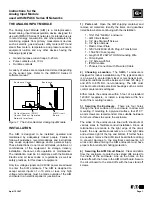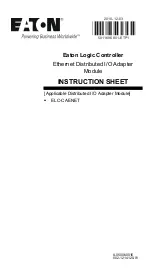
User Guide
Chapter 5 Cues
Rev. 1.30.03.07.r1
Page 89
Cue Record Modes
This section is more descriptive than procedural. It is meant to be used in
conjunction with the
section earlier in this chapter which
shows actual cue recording and editing examples.
There are three different cue recording / editing modes, called Cue Record
Modes. Each of these modes affects the relationship of channel levels in a
cue to their levels in subsequent cues, in different ways. The different cue
record modes are: Tracking, Cue Only and Clean Up.
In Tracking mode, channel levels track from cue to cue. This is useful for
looks that remain constant throughout a scene from cue to cue. The
advantage to cue tracking is that it allows you to quickly edit a basic look
for all the cues in the scene by editing levels in the first cue, so that the
changes "track into" the following cues. For example, say that while in
tracking mode you have channel 1 at 100%. You then continue to record
cues 2, 3 and 4 with channel 1 still at 100% and have other channel
changes occurring. You then realize that channel 1 should have been at
75%. So, you recall cue 1, and change the level of channel 1 to 75%. Since
you were in tracking mode, the 75% level is automatically transferred to
cues 2, 3 and 4. See the
section further in this chapter for
more information.
Cue Only mode operates very similar to Tracking mode, The difference
between Tracking and Cue Only modes occurs when you create or edit cues
in a blind display (Preview or Tracksheet). Refer to the
section further in this chapter for more information.
Clean Up mode is the simplest way of recording and editing cues. Channels
do not track from cue to cue, each cue exists as a separate memory of
channel levels, with no relationship to each other. Please see the
section further in this chapter.
Explanations are given in this section as how different cue modes work
while using conventional lights. Tracking works in a very similar way
when working with Moving Lights and examples are given in
You may want to read through this chapter first to
gain a good understanding of how tracking operates while using
conventional lights before moving on to Chapter 10.
Содержание 24/48
Страница 4: ...Table of Chapters Page II Rev 1 30 03 07 r1...
Страница 66: ...Chapter 4 Submasters Page 54 Rev 1 30 03 07 r1...
Страница 108: ...Chapter 5 Cues Page 96 Rev 1 30 03 07 r1...
Страница 146: ...Chapter 8 Macros Page 134 Rev 1 30 03 07 r1...
Страница 186: ...Chapter 10 Automated Devices Page 174 Rev 1 30 03 07 r1...
Страница 210: ...Chapter 12 System Settings Page 198 Rev 1 30 03 07 r1...
Страница 228: ...Chapter 14 Alternate Control Interfaces Page 216 Rev 1 30 03 07 r1...
Страница 244: ...Appendix B Specifications Page 232 Rev 1 30 03 07 r1...
Страница 248: ...Appendix C Maintenance Page 236 Rev 1 30 03 07 r1...
















































